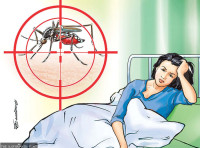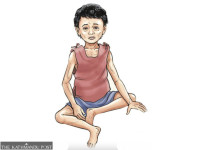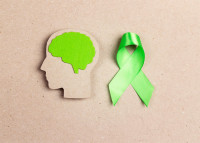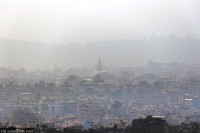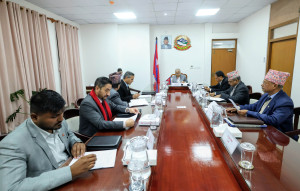Health
Dengue persists despite cooler temperatures
Health Ministry data show 144 people tested positive for the dengue virus in the last one week.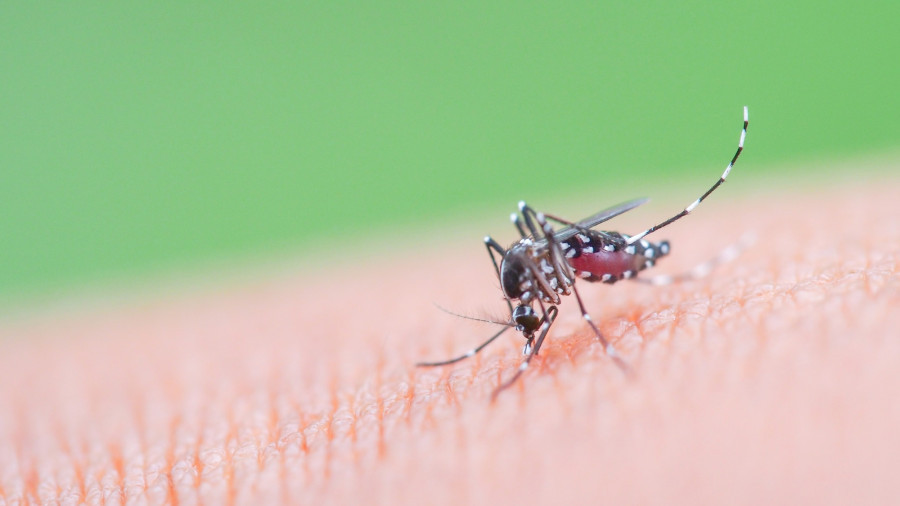
Post Report
Of 30 fever patients, who underwent testing for dengue virus at the Sukraraj Tropical and Infectious Disease Hospital on Wednesday, six tested positive. The hospital administration said that both the number of patients seeking treatment for dengue and the infection positivity rate have risen of late.
“Around 20 percent of fever patients seeking care in our hospital have been testing positive for the dengue virus,” said Dr Yuba Nidhi Basaula, director at the hospital. “Currently we have patients infected with dengue virus admitted in general wards, cabins and intensive care units.”
Dengue is a viral disease transmitted by female Aedes aegypti and Aedes albopictus mosquitoes. According to the World Health Organisation, the same vector also transmits chikungunya, yellow fever, and the Zika virus.
So far, five people have died and 6,668 others infected with dengue virus, which has spread to 75 out of 77 districts of the country. Experts say reported cases likely represent only a fraction of the true scale, as around 90 percent of the infected people are asymptomatic, and many deaths and infections often go unreported.
The Health Ministry's data show that 144 people tested positive for the dengue virus in the last one week despite the cooler temperatures. Health officials say that even though both maximum and minimum temperatures have declined, risk of infection from the deadly virus remains throughout the year, as the virus has already become endemic in the country.
“We had around 500 dengue positive cases in December last year and January and February of this year,” said Dr Gokarna Dahal, chief of the Vector Control Section at the Epidemiology and Disease Control Division. “One can get infected with dengue any time in a year. Since dengue became endemic in Nepal years ago, we no longer classify it as an outbreak of a deadly virus.”
Experts say even if maximum temperatures have declined, they remain above 15 degree Celsius, which is enough for dengue spreading mosquitoes to survive.
Earlier, officials had predicted a spike in cases after Dashain and Tihar festivals as people might become complacent towards the risks. They also warned that outbreaks could occur in camps for people displaced by floods and landslides caused by torrential rainfall in early October.
“It seems that the risk of major outbreak or hotspots has lessened this year, due to falling temperature,” said Dahal.
Dengue mosquitoes breed in clean water and bite during daytime. Uncovered water tanks and discarded objects such as plastic cups and bottles can serve as breeding grounds.
Symptoms of the disease include mild to high fever, severe muscle pain, rashes, severe headache and pain in the eyes, among other things. Doctors advise those with these symptoms to seek immediate treatment. While there is no specific cure for the disease, early detection and access to proper medical care can lower fatalities.
Many people infected with dengue show mild symptoms, which do not need any treatment or can be managed with paracetamol at home.
Nepal reported its first dengue case in a foreigner in 2004 in Chitwan district. Since then, an increasing number of dengue infections, including major outbreaks, have been reported from many districts.
The World Health Organisation says there is no specific cure for severe dengue, but early detection and access to proper medical care can save lives.




 13.12°C Kathmandu
13.12°C Kathmandu

